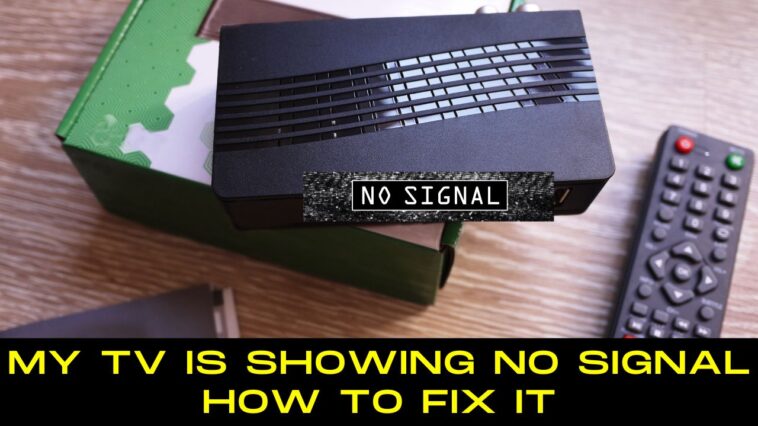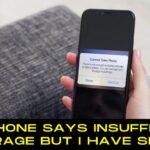Table of Contents
You don’t have to get rid of your television if it doesn’t have a signal. You may not even need to file a claim with your TV protection plan (if you have one), and the television may be fully functional.
Simply follow the instructions on this page, and you’ll be watching your favorite television shows in no time!
Because of bad weather or hardware problems, your television may experience “no signal.” If you live in an area with heavy rain, snow, or winds, your cable operator or streaming service provider will display a message indicating a signal reception failure. The signal can be restored by simply turning off the device for a few seconds. This is because modern satellite dishes are built to withstand harsh weather conditions.
When I turn on my HD flat-screen television, NO SIGNAL appears. Despite the fact that my CABLE BOX is connected and turned on, I’ve never seen anything like this before. I’m not sure if the problem is with my Samsung television or with the cable box. Because it says “NO SIGNAL,” my television is operational. Is there something wrong with the television where the cables enter?
What Exactly Is a “No Signal” Situation?
When the remote is activated, the majority of TV manufacturers use an automatic connection mechanism that detects and displays the connected device. If your television displays no signal despite being set to the same source or input as the cable box, you have a network reception problem.
You can try turning off the television, waiting a few minutes, and then restarting it. If the problem persists, you must troubleshoot each connection separately. It’s a simple process of elimination. Before connecting a laptop/computer or another screen-sharing device to an HDMI port on television, the device must be unplugged.
Below listed might be some of the reasons:
My TV Is Showing No Signal How To Fix It?
Reception issues
A “no signal” message typically indicates a problem with reception, i.e., the television is not receiving reception from the antenna or cables. If one of your televisions works but another does not, you may have a faulty television; otherwise, the ‘no signal’ message is almost certainly due to poor reception.
Is the satellite dish or UHF antenna properly positioned?
Someone may have accidentally nudged your satellite dish or TV antenna, or it may have been blown away by high winds or damaged by falling branches or other debris.
Repositioning a satellite dish or TV antenna can be difficult and dangerous; many people have died trying to improve their TV reception. If you believe you need to adjust your aerial or satellite dish, contact your TV package provider for assistance.
HDMI Cable/Port Issues
The majority of no-signal issues are caused by HDMI cables or ports. The ports may sustain minor damage if the connections do not fit securely or slip out. It’s nothing a TV technician can’t fix, and you can simply change the HDMI port. (The majority of television manufacturers provide at least two HDMI ports.) Disconnect the HDMI cable and reconnect it to either the old or new HDMI port. You should consider upgrading your HDMI connector cable to a self-locking one so that it stays in the port. Your TV signal should be operational again as soon as you resolve these HDMI issues.
ALSO READ: Easy Steps To Allow Virtualization In Windows 10!
Is the antenna or cable corroded?
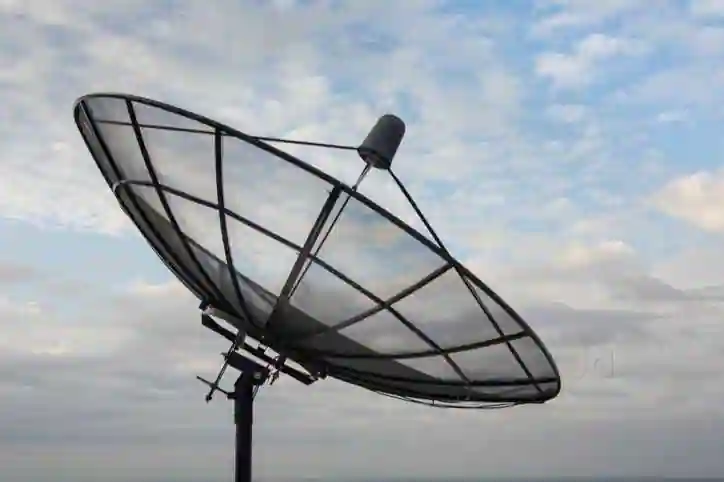
Outdoor antennas are vulnerable to rain and humidity, whereas indoor cables are vulnerable to normal wear and tear. Check that the cables and antenna are not rusted and are securely connected to the television.
Errors in the HDCP protocol
Your television may display an HDCP (High-Bandwidth Digital Content Protection) error in some cases. Unlicensed devices should not receive cable TV content, according to this anti-piracy measure. Almost all modern televisions must be HDCP-compliant.
If you connect a Kodi box via HDMI to your cable TV, the no-signal message will appear, especially on high-definition displays. This is caused by HDCP errors. The offending device must be removed, and the connection should be restored.
Service Interruption
If the digital box, antenna, and cables are all properly installed but the television still displays “no signal,” your service provider may have limited your access to their services. If this is the case, you should contact the service provider to determine the source of the problem and the steps needed to resolve it.
If you’ve tried everything and still get the “no signal” message, our skilled TV installation and repair technicians will quickly diagnose and resolve the issue.
Is the channel on air?
You may not receive a signal on your television if a television station goes off the air. Changing the channel will show whether or not this is correct!
Is the TV input properly configured?
AV 1, Scart 1, Scart 2,… PC / VGA On modern televisions, the list of inputs is practically endless, and some of them may be completely unnecessary for your needs! Simply cycle through the inputs with your remote or the buttons on your television until you find the correct one.
Here are some of the solutions to fix the desired problems you might have been facing till now
Reboot the device
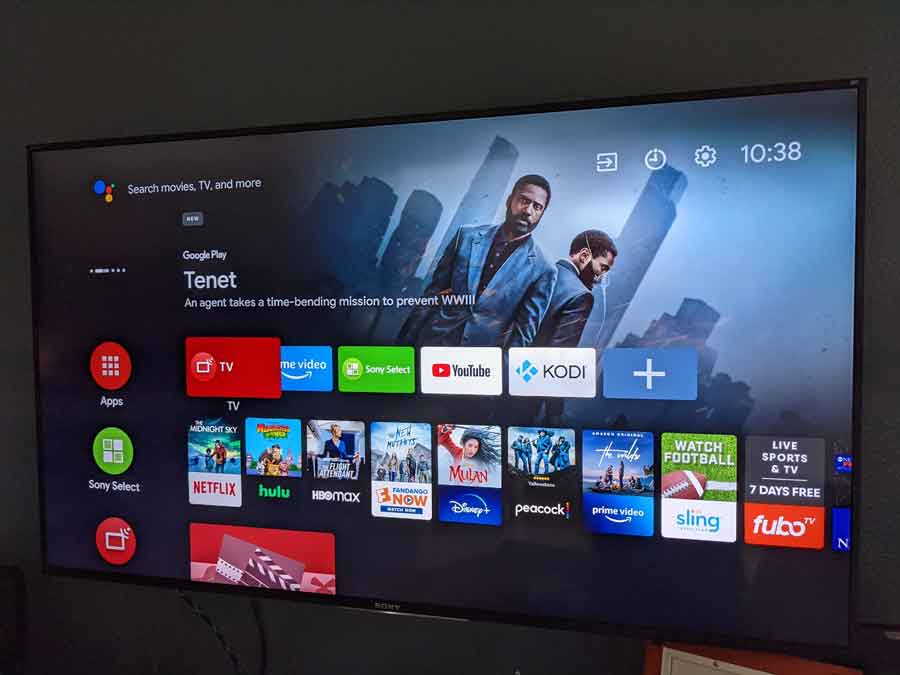
- To reset your television and all associated equipment, follow these steps:
- Turn off all wall-mounted appliances.
- Check that all cables are securely fastened.
- Wait 60 seconds before proceeding.
- Connect and turn on the TV box rather than the television.
- Wait another 60 seconds, or until the flashing lights on the TV box stop.
- Reconnect the remaining components and power on the system.
According to our research, the most common cause of signal loss is bad weather, so we’ve highlighted this at the top of your article. Signal transmission suffers greatly during heavy rain or a storm. As a result, the majority of you are unable to watch your favorite shows when the weather is bad.
Instead of C band transmission, use KU band transmission. During setup, check with your service provider about this. Transmission on the C band, with dispersed signals but no fine transmission. Precision signal transmission necessitates the use of the KU band.
Use only high-quality transponders
During the DTH installation, you must be present. The most effective method for preventing future No signal messages is proper installation. The possibility of poor reception is eliminated by installing high-quality transponders. Poor-quality transponders cause incorrect transponder selection, frequent wire disturbances, and other problems.
MUST-READ: Is GB Whatsapp Safe For Video Calls?
Check Signal Power
Check the signal strength as well during the installation process. For more information, consult the user manual for your set-top box. Go to the installation settings menu. You can check and adjust your signal strength yourself.
This ensures that the transponder receives the most signals possible during installation.
Signal Power Make certain that the signal strength is always strong. The signal strength and set-top box settings can be viewed by pressing the INFO button on your dish remote’s set-top box remote. Determine the signal strength and signal quality percentages.
If your television displays a “No Signal” message (HDTV or Standard TV), one of the four problems listed below could be to blame:
Is the NO SIGNAL problem limited to one television? Then Investigate Or Appropriate Input
- If only one TV shows the NO SIGNAL message…
- -Confirm that your television is linked to the same source or input as your cable box or satellite receiver.
- To turn on your television, use the remote’s TV button.
- -On Your television’s remote control, press the INPUT button.
- -Repeat this process for all of your television inputs
- -Continue until you reach the INPUT where your CABLE OR SATELLITE BOX is plugged in.
- The TV should then show CABLE or SAT programming.
- The inputs on your television will most likely be labeled HDMI 1, HDMI 2, HDMI 3, VGA, Component 1, Component 2, and so on.
Reset The Satellite Or Cable Box
- Detach the power cord from the cable or satellite set-top box.
- Keep it unplugged for two to three minutes.
- Reconnect the power cable to the set-top box.
- Allow time for the Cable or SAT box to power up, receive the signal, and initialize.
- If your TV screen still displays NO SIGNAL, proceed to the next step.
If the NO SIGNAL display appears on all of your televisions…
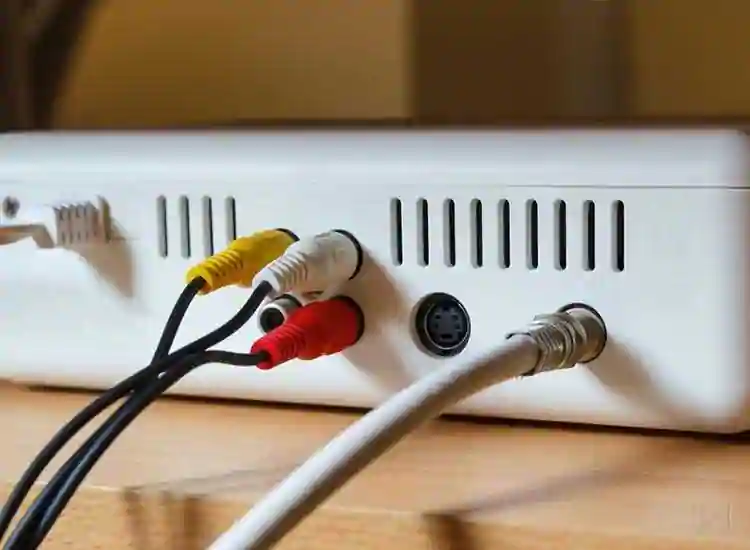
- BE SURE THE COAX OR ETHERNET CABLES ARE SECURE, OR THE CABLE OR SAT IS TEMPORARILY DOWN – Examine the cables where the CABLE OR SAT enters your home.
- -Ensure that ALL Ethernet and Coax cables are properly secured.
- -Contact your CABLE or SAT provider to confirm the absence of service.
- If you have SATELLITE, adjust your dish’s alignment.
- Restart both the TV and the cable box.
The following alternative is to restart the cable box. Use your remote or the box’s power button to achieve this. Wait several minutes before re-igniting. Restart your television afterward. Turn off the television and wait a few minutes before reactivating it.
Verify that you are using the proper TV input source
Another reason your TV is displaying No signal is that the input mode your TV is currently set to be different from the one your cable box is connected to
Change the inputs until the TV is visible
To access the inputs menu on your television, press the input button on the remote. Use either the input button or the directional keys to verify each input.
Search for Service Interruptions
If you still don’t have a signal, contact your cable provider. Determine whether there are any outages in your area and, if so, how long it will take to resolve them.
If you hang up the phone during an outage, your best option is to wait until service is restored. Walk around the house, watch something online, or engage in any other activity to pass the time while they restore power.
READ MORE: How To Sign Up For Truth Social? What Exactly Is It?
Restart the television and the cable box
Similar to how we restarted your cable box and television, we will now restart your cable box. A restart performs only a soft reset, meaning not all settings are restored. A reset, on the other hand, restores nearly all settings to their original state, with the exception of those made by the user. If you’ve tried everything else and your television still won’t work, resetting it is a good option.
To reactivate your cable box, do the following:
- Start by turning it off.
- At least five minutes must elapse after unplugging the power cord from the wall.
- Reconnect the power cord and power up the device.
- Resetting the television involves:
- Turn the television off.
- Unplug the electrical cord from the socket.
- Wait minutes before turning the device back on.
Alternate Suggestions
Occasionally, you must tune your television to a different base channel. While 1 or 2 is the default on the TV remote, you should occasionally switch to 3 or 4. This change affects only the TV remote and has no bearing on your cable or streaming service provider. You can also reverse the activation order of the cable box and television compared to a previous sequence. Thus, both devices are able to reconnect and receive signals.
It can be annoying when a television displays a signal-loss message. In the majority of instances, however, you do not need to seek outside assistance. You can solve the issue on your own by addressing one of the troubleshooting steps in this manual.
After selecting an input, the Sony television displays no signal
If this message appears when you attempt to select input on your TV, please follow the steps below. After each step, verify that the problem has been resolved. If model-specific information is required to complete any step, consult the for your device.
This message may appear following a software update to Android TVTM.
Verify that the appropriate input is selected. This message will appear if you select an input that is not connected to an active device.
Verify that the source device is powered and activated
- If an HDMI® cable is used to link the source device to the display:
- Ensure that both the TV and source device are powered on, then disconnect and reconnect the HDMI cable from one of the devices.
- If your TV supports HDMI Enhanced Format and the source supports 4K signals, activate HDMI Input Enhanced.
- Try a previously tested or new HDMI cable.
- Connect a second source device to the same input to determine whether the issue is with the input or the first source device.
- If you have another source device connected to your TV, you can change the input.
- If a signal is present, the problem may lie with the source or input device.
Restart the source system
- Unplug the device from the electrical outlet or power strip.
- Wait one minute before plugging in and turning on the source device.
- If the device is connected to a power strip or surge protector, unplug it and connect it directly to the wall outlet. If the issue has been resolved, it may have been caused by the power strip or surge protector and not the device or television.
- If the issue persists after attempting all of the preceding steps, reset the television’s power.
How to Resolve the HDMI Signal Loss Issue; More Options
If there are no signal issues when connecting your TV or monitor to your PC via HDMI ports, you should not be concerned. You are not on your own. A significant amount of users have reported this issue. Using one of the solutions provided in this article, you can resolve the issue.
The No Signal message indicates that the TV or monitor is not receiving any input from the currently selected source. The problem has five possible resolutions. You may not need to try each one. Simply proceed down the list until you find a suitable option.
Change the Source of Input
Use the Input or Source button on your remote to switch the input source to the HDMI port. If your device has multiple HDMI ports, select the correct one.
Enable the HDMI connection option
To connect your Android phone or tablet to the television, you must enable the HDMI connection on your device. To do so, navigate to Settings > Display Entries > HDMI Connection.
If the HDMI connection setting is currently disabled, enable it. If you were unable to locate the setting, try the following solutions.
Update the video card and motherboard drivers

The issue may be the result of a faulty chipset or graphics driver. Update the drivers and see if the issue is resolved. Driver Easy can update drivers automatically if you lack the time, patience, or computer skills to do so manually.
Driver Easy will detect your system and find the correct drivers. You don’t need to know what operating system your computer is using, you don’t need to risk downloading and installing the incorrect driver, and you don’t need to be concerned about installing improperly.
With either the FREE or Pro version of Driver Easy, you can update your drivers automatically.
Try unplugging and reconnecting the power cable to the television or monitor.
Unplug the TV or monitor’s power cable for a few seconds before reconnecting it. This could be of great benefit to you.
Final Verdict
To conclude, above mentioned are some of the trial and tested methods of solving the problem when your TV displays the message “No Signal” . All the methods have been checked by us and tested properly whether they are working or not!
READ NEXT: How Do I Fix My Bluetooth Audio Stuttering? Easy Tips And Tricks! (9 Ways)


